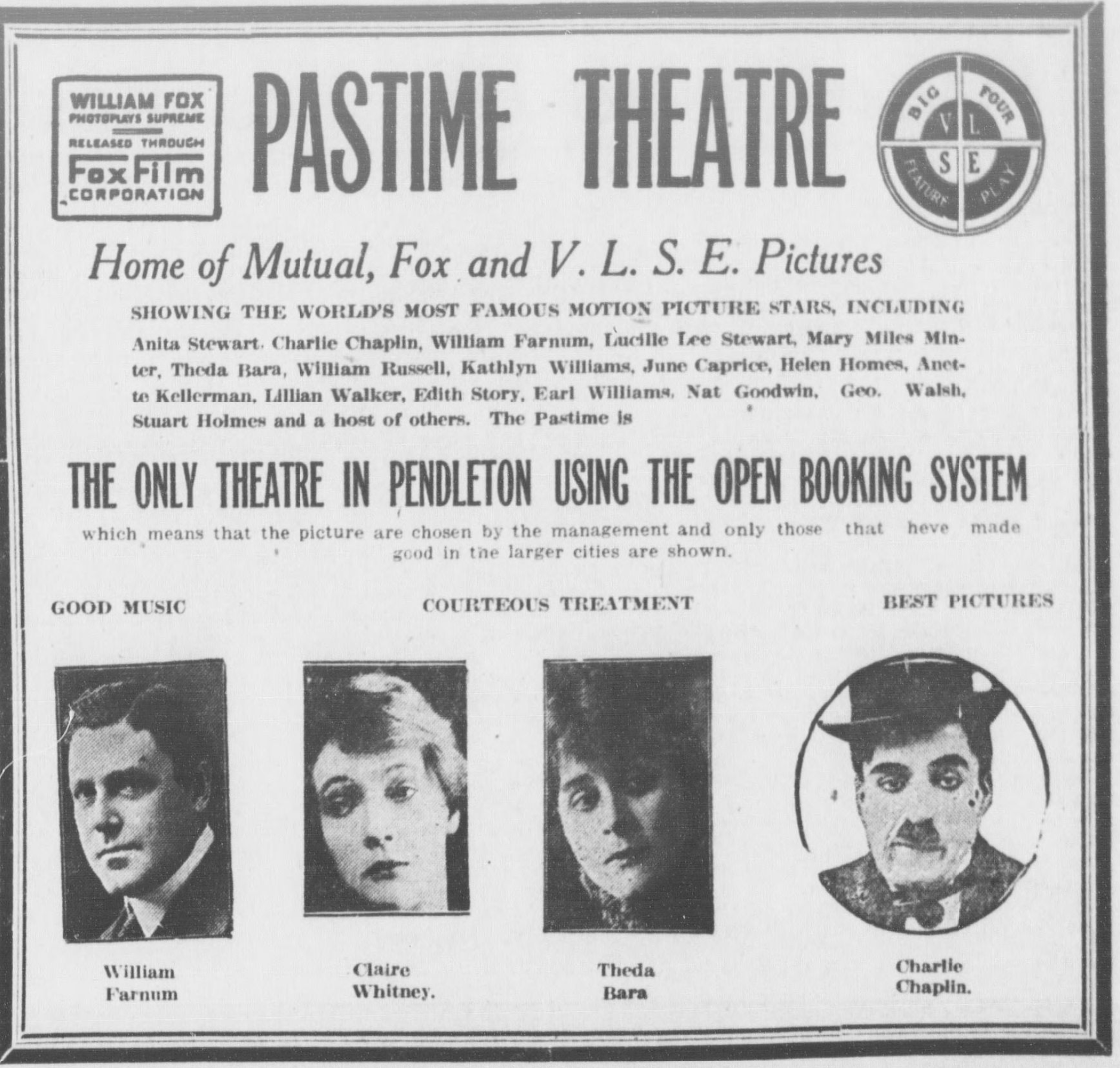In the September 21, 1916 edition of the East Oregonian there appears an advertisement for the Pastime Theatre, located in Pendleton, Oregon. The ad is part of a page headed “Pictures and Plays in Pendleton,” although the page itself consists exclusively of advertisements outlining the appeals of various Pendleton theaters and containing no actual information about the pictures showing.

This advertisement’s strategy for promoting the Pastime is primarily threefold. It focuses on the film companies whose films the Pastime shows, the stars who appear in those films, and the Pastime’s practice of only booking films “which have made good in larger cities.” This latter element seems to be especially important, as it is advertised in bold type with the statement “The only theater in Pendleton using the open booking system.” This copy implies a greater degree of selectiveness and therefore quality in the films that the Pastime shows, differentiating it from its competition.
Even in 1916, only about five years after newspapers began to carry content related to photoplays, name recognition of stars and production companies (Fox, Mutual, and V.L.S.E. are named in this ad) served as a major promotional strategy for at least one Pendleton theater. Charlie Chaplin is the only star mentioned in the ad who is still recognizable, but William Farnum and Clair Whitney are also advertised.
Additionally, the appearance of the tag lines “good music,” “courteous treatment,” and “best pictures” seem to sum up the Pastime’s brand image. The “courteous treatment” element is especially interesting, as it highlights the vestiges of the opera-house experience that characterized movie-going throughout the early twentieth century and contributed to the audience’s experience of “going to the movies.”
Of course the quality of the musical accompaniment was of great importance during the era of silent film, and a longer description, located elsewhere on the same page of the Eastern Oregonian, of the Pastime’s attractions asserts the quality of the three-piece orchestra employed by the theater.
